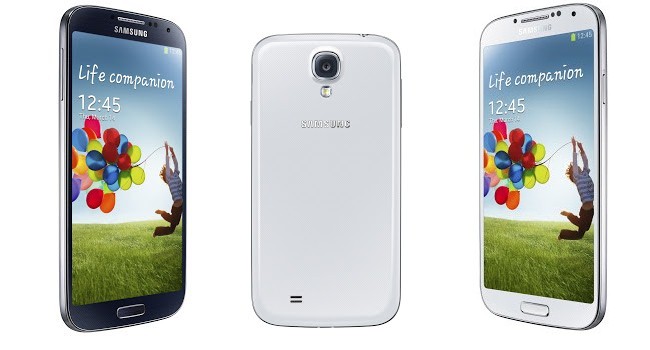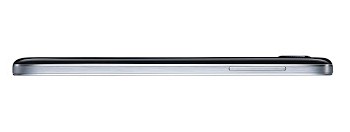WhatsApp’s 2025 update surge is in full motion and South Africa is once again at the front of the global test pool. With more…
The Samsung Galaxy S 4: we’re in the age of evolution


It’s here. The skunkworks at Samsung have produced a new flagship, designed to take on the iPhone in a seriously big way. Yup, the launch of the Galaxy S 4 just pushed the smartphone arms race that little step further. Here’s everything you need to know about it.
Welcome to the age of evolution
When the iPhone 5 launched last year, there were a fair number of people who said it was a disappointment. It didn’t do enough cool new stuff and the closest thing to a big change Apple seemed to have undertaken was lengthening the body and screen a little bit. It was easy to write off proponents who suggested that we were in an era of evolution rather than revolution until the S 4 launch. Let me explain what I mean.
Design
Design-wise, the phone is essentially an S III, but one which has been given a little size boost. The fact that it’s now got a five-inch screen nudges it into the phablet space. A good few phone makers seem to be hurtling in that direction though, so it makes evolutionary sense.
Despite its screen estate growing, the S 4 is a slightly leaner machine than its predecessor. It’s ever so slightly thinner and a whole six grams lighter. Ordinarily we’d be sceptical about those kinds of losses, but achieving them when you’ve actually made the phone bigger is pretty spectacular.

Internals
In terms of its internals, the most talked about advances of the S 4 are just that, advances. The chipset (either snapdragon or Exynos depending on which region you’re in) and CPU are powerful to be sure. No one’s going to sneeze at a 1.6GHz 8-core Exynos processor or the 1.9GHz quad-core Snapdragon CPU but neither of them are revolutionary. They’re just more.
The fact that the S 4 will ship in 16GB, 32GB and 64GB configurations means that it’s pretty much in line with the other top range smartphones out there, while the option to boost that space with add an SD card is standard-fare for the South Korean manufacturer.
Display
The evolutionary theme continues on into the display. Super AMOLED capacitive touchscreen, 16M colors and 1080 x 1920 pixels with 441ppi. Hang on a moment. Was it really necessary for the screen to have such a high pixel density? Have we not moved beyond the realms of what the human eye can actually see? You get the feeling Samsung did this just because it could.
Battery
This is one area where the “more is better” dictum makes a lot of sense. The S 4’s 2600 mAh battery should do you quite well when it comes to lasting through the day. That beast of a processor and monster screen will pretty much push it to its limits though.
Killer features
Even Smart Stay eye tracking, the software feature everyone was talking about prior to the launch, fits the evolutionary model. It’s pretty cool that the phone can track your eyes to scroll down the page, but it’s a pretty natural progression from the S III’s ability to detect that you’re reading something on it.
To our minds the really cool feature is ‘Air Gesture’, which allows you to explore, magnify and preview content by hovering your finger just above the screen. It’s something that’s been borrowed from Windows 8 touch displays and, combined with the eye scrolling, makes perfect sense for anyone who hates getting grubby fingerprints on their phones. In other words, everyone. Let’s just hope it works.
On the touch front though, it looks like Samsung’s actually realised that people occasionally use their smartphones in cold conditions. The S 4 apparently works with regular gloves. For people in cooler climates that means one of two things: no more frostbite when you try to type a message on your phone, or no more having to buy those dorky touch-screen gloves.
Operating System
The S 4 runs Android 4.2.2 JellyBean, along with the usual Samsung tweaks. As anyone who’s ever owned a non-Nexus Android will tell you, those can be annoying. The features listed above though mean that this may be one Android you don’t want to root. Then again, if those features start heavily taxing the phone, then rooting may still be the only sane option.
Camera
In evolutionary terms, we’re at the point where smartphone cameras aren’t really taking any great leaps forward. It would be difficult for them to do so without telescopic lenses. Instead we’re making a series of small, constant advances. The S 4’s 13-megapixel camera is the perfect example of this. It’s capable of shooting Full HD video and can take 100 photos in four seconds. The latter of these features seems like a vanity play on Samsung’s part and, unless it manages to kickstart a global trend for 100 photo fast action sequences, may well be an evolutionary dead end.
There are a couple of fun tools related to the camera — the ability to embed audio files from photos for instance — but they’re not really part of the camera hardware. We couldn’t help but chuckle when we found out about the feature that lets you auto-remove unwanted people and objects from your photos (to commit your own Soviet-style purges on the go).
Networks
If you’re not a network geek, then you can skip over the list below and rest confident in the fact that the S 4 will more than likely work at optimum speed in whatever region you’re in.
Network geeks, here’s what you need to know: HSDPA, 42.2 Mbps; HSUPA, 5.76 Mbps; LTE, Cat3, 50 Mbps UL, 100 Mbps DL.
Conclusion
The Galaxy S 4 is a product of evolution yes, but the steps forward it’s taken appear (for the most part) to be good ones. It’s a great-looking phone with a lot of cool features and some of the best specs on the market. Expect it to break sales records.

